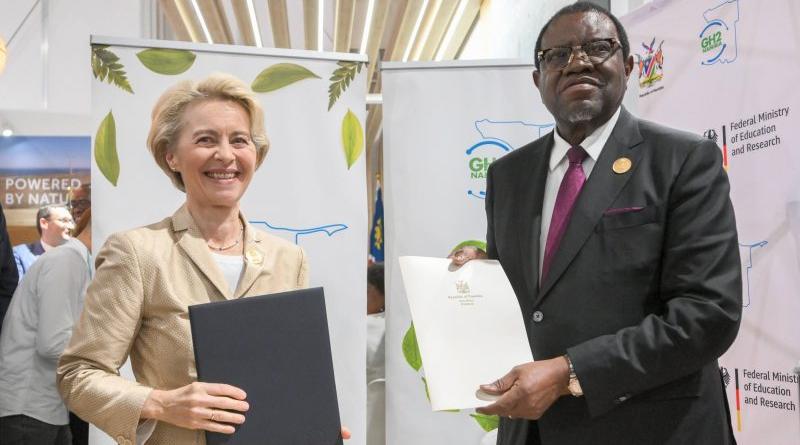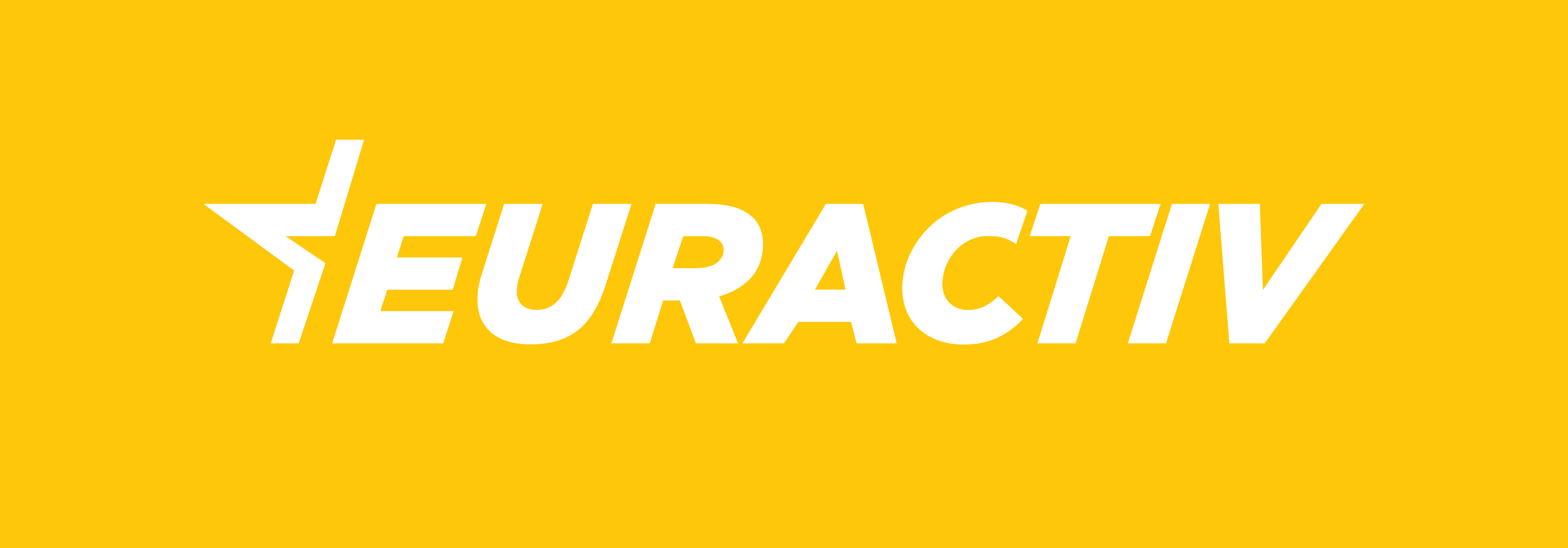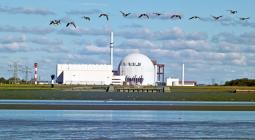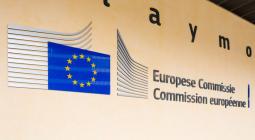Europe’s green hydrogen rush risks energy ‘cannibalisation’ in Africa, analysts say

Europe’s green hydrogen plans have set off a race among developing nations, particularly in Africa, to become the bloc’s first suppliers, risking energy needs among their own populations. EURACTIV’s media partner, Climate Home News, reports.
The EU bloc sees hydrogen made with renewable energy – known as “green hydrogen” – as a cost-effective way to reduce emissions, especially in industries that are difficult to decarbonise such as aviation and heavy land transport.
While the European industry is in its infancy, hopes of achieving short-term goals largely rest on production overseas. Countries, especially in Northern and Sub-saharan Africa, have been attracted by the sector’s opportunity for investments and new jobs, analysts told Climate Home News.
But experts warned the enthusiasm hides significant risks. Incentives built into the EU regulations mean the massive scale-up of green hydrogen exports could take up most renewable electricity in developing nations, at the expense of local populations.
This would be a problem for countries like Namibia – one of the EU’s key hydrogen partners – where just over half of the population has access to electricity.
For Godrje Rustomjee, an analyst at the African Climate Foundation, countries need to find the right trade-off between domestic needs and export potential.
Otherwise, he says, the risk is that green hydrogen may turn into “another neo-colonial project”.
“There is a real possibility that foreign countries come in with direct investment, but all the benefits and added value end up being extracted and sent across to Europe”.
Marta Lovisolo, a hydrogen analyst at Bellona, says the risk developing countries will divert resources toward production for exports is “extremely high”.
“Green hydrogen is something Europe desperately wants and developing countries could potentially mass-produce for a lucrative market,” she says. “As it happened with fossil fuels, countries seem ready to stake everything on becoming exporters without being given the necessary safeguards.”
Betting big on hydrogen
Despite being a nearly non-existing energy source today, green hydrogen has become a cornerstone of Europe’s decarbonisation plans.
Green hydrogen is mostly produced through electrolysis, a process that separates water into hydrogen and oxygen, using electricity generated from renewable sources.
The bloc has set a target of reaching annual domestic production of 10 million tonnes of renewable hydrogen by 2030 and importing the same amount. It is a tall order, considering that last year worldwide green hydrogen production capacity was 109 kilo tonnes – a fraction of what the EU wants to achieve.
Currently, most hydrogen is created using fossil fuels. Around three-quarters is derived from methane gas and a quarter from coal. Green hydrogen is more expensive to produce and accounts for less than 1% of total global production.
To fuel its ambition the EU is pouring billions of euros into the sector. Alongside investments in the build-up of domestic capacity, funds are being committed towards partnerships with future exporting nations.
The EU has signed agreements with a series of countries including Egypt, Kazakhstan, Morocco and Namibia. The partnerships are billed as a win-win situation.
Rules exemption
The Commission has also recently set out the rules on renewable hydrogen. Among various provisions, it includes a criteria for developing renewable electricity called ‘additionality’.
In the future, hydrogen producers will have to make sure that only new renewable electricity generation capacity is used for green hydrogen production. This is to ensure hydrogen production does not take away existing renewable energy from the grid, potentially increasing reliance on fossil fuels elsewhere.
Additionality can be achieved either by directly connecting a solar or wind farm to a hydrogen production facility or through purchase agreements with clean power generators.
But European lawmakers have included a phase-in clause to speed up the industry with the hope of meeting its 2030 goals. Any green hydrogen installation that starts production before 2028 will be exempted from the additionality rules for the following ten years, until 2038.
That means the projects developed before that date will be able to use already installed capacity, for instance taking clean energy directly from the grid.
Analysts say the rules have set off a race between exporting nations to meet the 2028 deadline. Namibia, for example, hopes to begin exporting green hydrogen in 2026, although analysts believe this will be very difficult to achieve.
Risk of ‘cannibalisation’
Maria Pastukhova, a senior policy advisor at E3G, says the rules allow hydrogen projects to “cannibalise” the existing local infrastructure for the purpose of export production.
“For many countries, especially in Africa, this energy is needed at home, where grids need to be decarbonised or local citizens don’t have access to electricity,” she added.
Only 56% of Namibians had access to electricity in 2022. The nation imported 60-70% of its electricity demand, most of it coming from fossil fuel sources.
The Southern African nation, in particular, is racing to become Africa’s first green hydrogen exporting hub, but faces a context of high unemployment and one of the most unequal economies in the world, according to the World Bank.
Namibia’s pitch
Namibia’s President Hage Geingob sees green hydrogen as an “engine of growth” that will make the country an industrialised economy and create a large number of jobs.
“Because of our national green hydrogen efforts, Namibia remains well-positioned to become a major supplier of clean and green energy to the world,” he said at Cop27.
In 2021 the Namibian government began pitching its proposition to European leaders, luring them in with the promise to supply up to three million tonnes of renewable hydrogen every year.
Germany was first to respond to the calls and quickly partnered with its former colony. A German private joint venture is now working with the Namibian government to develop a $9.4 billion green hydrogen project. The huge infrastructure is expected to take up 4,000km2 of land (roughly four times the city of Berlin) within the Tsau Khaeb National Park.
Its goal is to begin hydrogen production by the end of 2026.
Money for hydrogen
Following Berlin’s lead, the European Commission signed a memorandum of understanding (MoU) with Namibia on renewable hydrogen, something they have also done in at least other three developing countries
The agreement aims to facilitate “the production and export of renewable hydrogen”, while offering Namibia the “possibility to achieve its own energy security and decarbonisation objectives”.
At the same time the European Investment Bank pledged to give Namibia a loan of up to 500 million euros to finance renewable hydrogen and renewable energy investments. The EIB President said “the development of a green hydrogen economy will bring Namibia and Europe closer together – as partners”.
A similar memorandum of understanding was signed on the sidelines of Cop27 between the European Union and Egypt. The partnership is aimed at “contributing to the EU future plans to import renewable hydrogen”, while accelerating “the Egyptian energy sector’s transition and decarbonisation”.
The agreement does not yet contain any binding commitment but it expects to encourage investment in infrastructure and easier access to financing options.
Upon unveiling the deal, the European Commission Vice-President said Egypt is “ideally placed” to transport green hydrogen to Europe. He added that Egypt is blessed with “unlimited potential for solar and wind energy”, which goes beyond local electricity needs and, therefore, can also be used for green hydrogen.
Despite this potential, the country’s energy sector is still hugely dominated by fossil fuels, with only about 6% of the supply coming from renewables.
Bellona’s Marta Lovisolo says the agreements are “full of nice words, but do not have any legal safeguards” to prevent European interests come first.
She adds developing countries are particularly attracted as the European Union has signalled it would subsidise the big premiums needed for green hydrogen.
More money to come
Brussels is working on a subsidy scheme to bring down the prices of hydrogen for buyers. Green premiums would cover the cost gap between renewable hydrogen produced overseas and the fossil fuels it would replace.
The money pot is expected to be large. The green premium to achieve the 2030 targets for hydrogen could come up to €115 billion in total.
For the African Climate Foundation’s Godrje Rustomjee the financial incentives are just too good for developing countries to ignore. “On one hand they could use renewables only for domestic consumption but this could come at extreme cost,” he says, “on the other, the nature of these export deals has the potential of doubling a country’s economy”.
The key, he says, it’s striking the right compromise and securing safeguards in the deals with rich importing countries.
He believes these should include safeguards for local electricity provision and incentives, such as the localisation of manufacturing in the country.
This article originally appeared on Climate Home News and is reproduced here with kind permission
cover photo: European Commission President Ursula von der Leyen signed a Memorandum of Understanding with Namibian President Hage Geingob at the COP27 climate summit in Egypt, 8 November 2022. The MoU with Namibia covers renewable hydrogen and sustainable raw materials value chains. [European Union, 2022 Copyright]






